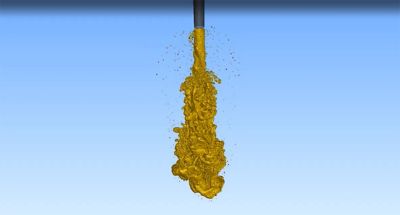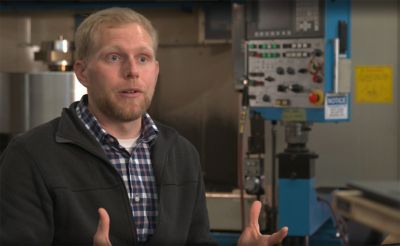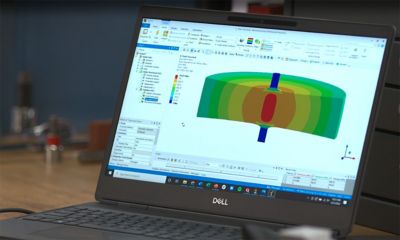-
United States -
United Kingdom -
India -
France -
Deutschland -
Italia -
日本 -
대한민국 -
中国 -
台灣
-
Ansysは、シミュレーションエンジニアリングソフトウェアを学生に無償で提供することで、未来を拓く学生たちの助けとなることを目指しています。
-
Ansysは、シミュレーションエンジニアリングソフトウェアを学生に無償で提供することで、未来を拓く学生たちの助けとなることを目指しています。
-
Ansysは、シミュレーションエンジニアリングソフトウェアを学生に無償で提供することで、未来を拓く学生たちの助けとなることを目指しています。
ANSYS BLOG
May 25, 2022
Earth Rescue: The Climate Crisis is Here, but so is the Human Ingenuity to Fight it
The United Nations calls it “the defining crisis of our time.” Climate change is impacting all forms of life on Earth and scientists warn that without immediate action, our planet will soon be irreversibly damaged.
At Ansys, we collaborate with our customers in a global community of engineers that includes many of the visionary companies that are taking up the fight against climate change. Through their breakthrough technologies, they are working to clean up and protect the environment in ways never considered possible before.
In our new docuseries, Earth Rescue, we are celebrating the ingenuity of these pioneers, and showing how simulation is helping them take leaps of certainty to bring their world-changing, world-saving ideas to reality faster.
From unlocking the power of renewable energies to removing orbital debris from space, Earth Rescue tells the stories of pioneering organizations across industries and around the world who are applying their engineering genius and Ansys simulation solutions to solve the world’s most unifying challenge.
The Role of Simulation in Sustainability
Inventing any sustainable solution is an engineering challenge. Variables in materials, environment, and life cycle quickly add up to endeavors that are not only global in impact, but epic in complexity. Simulation is imperative in solving these multifaceted problems. On Earth Rescue, you’ll see how simulation helps to accelerate the transition to a more sustainable planet by giving engineers the insight to explore, test, and create their world-changing ideas faster and more efficiently. Season 1 will feature innovations in new sources of power, clean energy, transportation, and cleaning up our environment.
Earth Rescue Episode 1 is all About Power
According to the Intergovernmental Panel on Climate Change (IPCC), 89% of all CO2 emissions come from fossil fuels. So how do we power our economy and our way of life without severely damaging the planet? One part of the solution is alternative sources of energy.
As Earth Rescue Host Rosh D’Arcy says in the first episode: "Any look at climate change starts with energy.”
In Season 1 Episode 1: Power, Earth Rescue explores some of the groundbreaking energy innovations being developed today by new energy pioneers Quaise Energy and Amber Kinetics.


Carlos Araque, CEO of Quaise Energy, explains a new type of energy drilling system to bring clean, renewable geothermal energy to market.
Quaise Energy, a startup born from research at the MIT Plasma Science and Fusion Center, is pioneering a new type of energy drilling system to reach the depths necessary to exploit the largest source of power-dense clean energy on Earth. In this episode you’ll learn more about their mission to bring the inexhaustible, renewable, and clean power of deep geothermal energy to future generations, and how simulation enables Quaise Energy to understand how to use millimeter waves moving through a gas-filled pipe to vaporize rock and economically drill very deeply.
“Simulation is a workhorse for everything we do,” says Carlos Araque, CEO and co-founder of Quaise Energy. “With it, we’re able to develop a system that that allows you to tap a clean geothermal energy source no matter where you are in the world, at cost parity with the most competitive renewables. No one, before Quaise Energy, has been able to accomplish that.”


Kyle Gaiser explains how Amber Kinetics simulates the flywheels in its kinetic energy storage systems.
In Episode 1 of Earth Rescue, we not only focus on how to produce energy efficiently, but also how to store renewable energy. One of today’s challenges with renewable energy sources is their intermittent nature, for example solar power that can be produced based on the time of day, and wind power can be produced based on certain weather conditions.
Amber Kinetics flywheel technology bridges the gap between traditional energy generation, renewables, and battery-based energy storage systems. The company uses simulation to help ensure its massive steel flywheel rotor can safely expand and contract as it spins up and decelerates.
“Ansys simulations give us a lot of insight into potential issues in the design and we can catch those things early on, before we even have to cut any metal to do testing,” says Kyle Gaiser, a mechanical engineer with Amber Kinetics.











